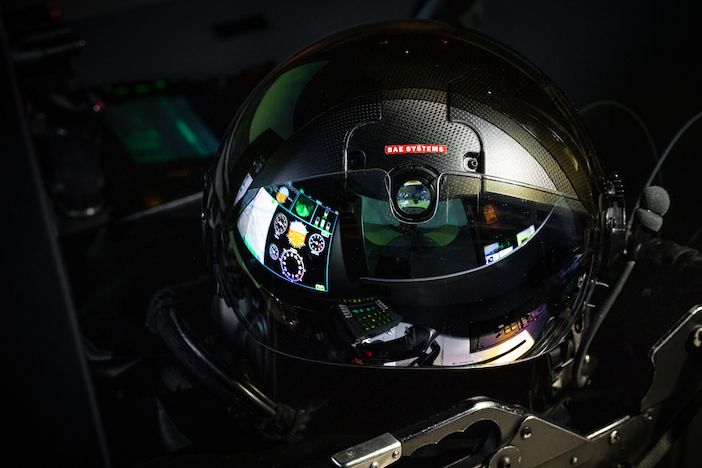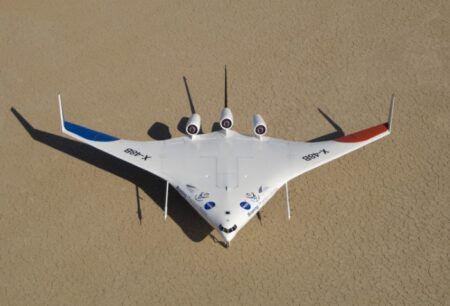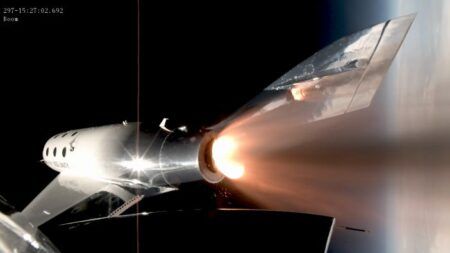Words by Benedict Evans
BAE Systems Rochester is home to the aerospace and defense company’s Faraday Test Centre and its Simulation and Synthetic Environments Facility. The team here delivers complex test programs and
UKAS-accredited qualification for commercial, civil, military, and aerospace products for both internal programs and external customers.
A diverse range of products goes through the laboratories at Rochester: flight sticks, helmets, defibrillators, and even microwaves. There is a correspondingly diverse set of qualification requirements. But BAE Systems Rochester is best known for the several key advances in the helmet-mounted displays (HMD) and the heads-up-display (HUD) technology used by fighter jet pilots developed there.
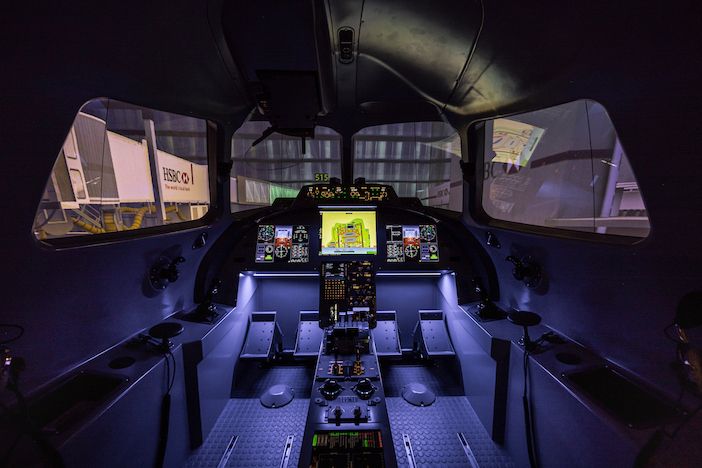
(Image: BAE Systems / Christopher Ison)
Organizational changes
The Faraday Test Centre at Rochester conducts electromagnetic compatibility (EMC) testing and environmental testing. Paul Davison has been the manager of the Faraday Centre for 18 years and has been an integral part of its evolution. The Centre was restructured several years ago. The changes made have been instrumental in upskilling team members and increasing their engagement with the job while improving the center’s efficiency as a one-stop qualification department.
“The Test Centre used to have four separate teams – the environmental lab the electromagnetic conductivity lab with the design engineers and program management teams upstairs. The arrangement was disjointed, so we pulled it all together into one department where we can work together,” says Davison.
Nowhere is the efficacy of the Test Centre more evident than in the advanced functionalities of the Striker II HMD, which has been in development since 2014 and is planned to be in service within the next few years. BAE Systems is in talks with several nations about Striker II and the Rochester site could manufacture as many as 80 per month if required.
Despite capabilities that far exceed those of its predecessors, Striker II is cheaper than the F-35 helmet, which is priced at US$400,000. “We quite openly market it as the most advanced helmet-mounted display in the world,” says Allan Charles, head of business development at BAE Systems.
The speed and efficiency with which the team has developed Striker II is thanks to well-established processes between BAE System’s development and testing teams and use of its simulation facilities. “All of the design and the majority of the testing, excluding specialized testing like the high-speed wind blast, for Striker II is done here,” says Nigel Kidd, BAE Systems’ director of head-mounted displays. “The manufacturing done here is supported by a global supply chain.”
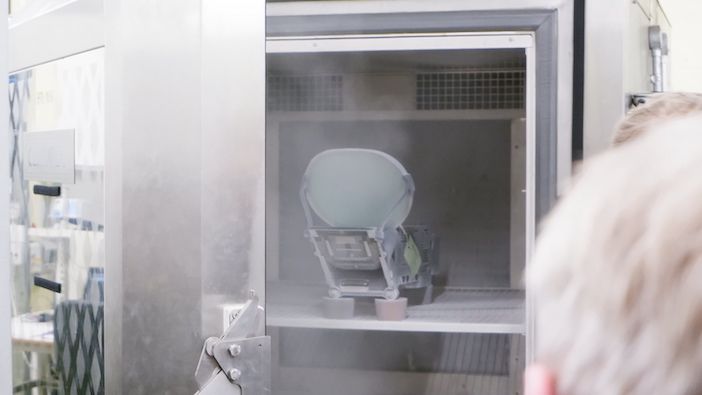
to -70˚C (Image: BAE Systems)
Lighter and more capable
The move from analog to digital has been a paradigm-shifting development for HMDs, which are designed with safety and simplicity front of mind. But the change presents a complex challenge. Removing the bulky cathode-ray tubes present in old versions in favor of a 4K digital display makes a helmet lighter, while upgrades to the luminance and clarity of the symbology allow for faster, more instinctive reactions from the pilot. These are ideal features for the high-stress combat situations in which they will be used.
“Striker II is a generation ahead of what’s available for the F-35,” says Kidd. “The camera technology needs to keep up and match what the helmet is capable of, not the other way around. The spatial audio is stereo on steroids and the symbology is visible even with night vision equipped.”
Environmental testing
Minimizing the length of the development and testing phase is an important consideration for BAE Systems and its customers. The ability to repeat tests with minimal interruption expedites development. Each team also aims to progress from one phase of development to the next as much as possible. However, the breadth of testing required for advanced military equipment such as the Striker II cannot be understated. Hundreds of test articles are pushed beyond their breaking points during testing.
“We destroy a lot of assets and that takes a lot of time,” says Kidd.
Facilitating the environmental and EMC testing that takes place at the Faraday Test Centre are three anechoic chambers and 10 climatic chambers. There are slip tables, overpressure vessels, shock machines, a centrifuge and a salt spray chamber.
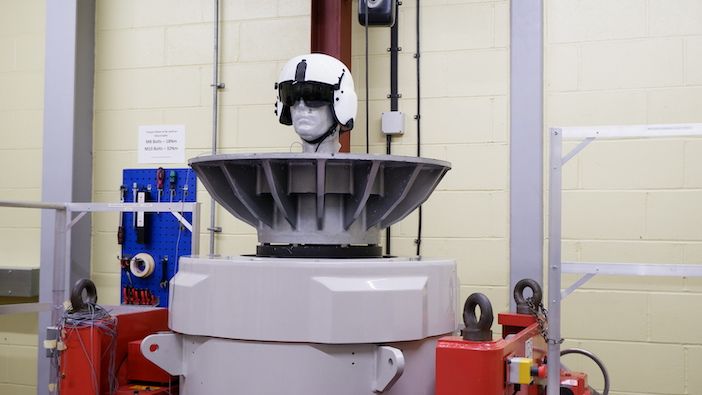
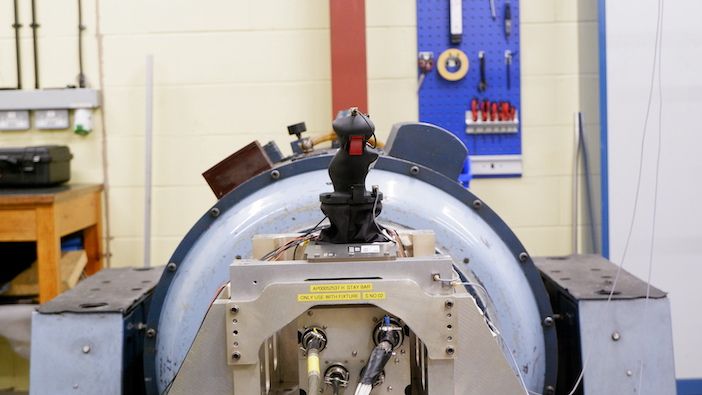
Each testbed is custom-made, highly specialized, and expensive. With lead times of up to 18 months, each climatic chamber costs upwards of £120,000 (US$145,000), and anechoic chambers around £500,000 (US$600,000). Three of the climatic chambers can simulate drastic changes in temperature, altitude, and humidity, with temperatures plummeting to -70°C (-94˚F) and soaring to 140°C (284˚F). The shock machine can output up to 300G, while the centrifuge can reach 30G.
A recent series of tests for helicopter components lasted six weeks and subjected the test article to extremely harsh conditions for long periods of time. The accumulated stress rests both with the items tested and with the testbeds themselves. To maintain efficiency, careful and constant attention is paid to the maintenance of the chambers, especially those in the environmental laboratory.
“Products are tested to the extreme because they must work for the life of the aircraft. We can’t sit there and vibrate a product for 25 years so we use higher levels and shorter duration tests,” says Davison. “We continually plan for investment, looking ahead up to ten years.”
The next milestone in the upgrading of the environmental testbeds is to achieve faster ramp rates and quicker cycle times. To achieve these goals Davison’s team are considering a new £350,000 (US$420,000) climatic chamber.
Simulation and Synthetics
BAE Systems’ Rochester facility is world-class and linked to BAE Systems’ success and capability to innovate. With myriad internal and external stakeholders and a pipeline of products to test and develop, the passion within its core teams is evident. It is also equipped to develop technologies like the Striker II because it handles R&D, testing, qualification up to ISO/IEC 17025, simulation, and after-sale service in situ.
The Simulation and Synthetic Environments Facility is a short walk from the Faraday Test Centre. It hosts a mix of VR, AR, and simulators that enable engineers to develop and tweak products and equipment.
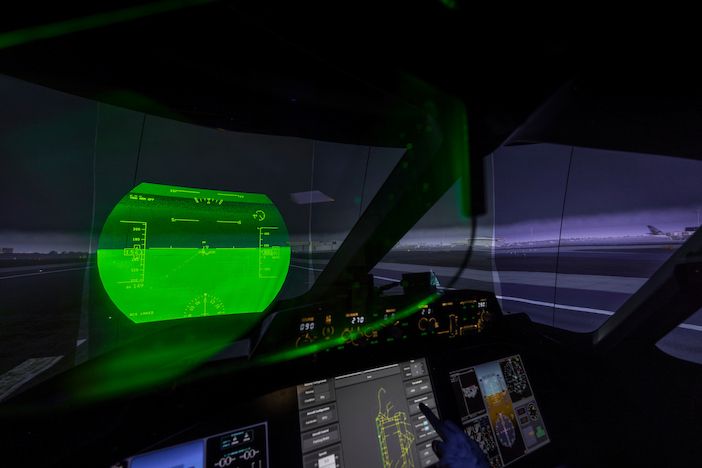
Heads Up Displays featuring night vision
(Image: BAE Systems / Christopher Ison)
The RAF’s Typhoon Test and Evaluation Squadron 41 TES have used the facility to help with the development of Striker II. The squadron has provided valuable feedback to the development team about Striker II. Feedback has also been provided by BAE System’s own industry test pilots from its Warton facility, where it builds the Eurofighter Typhoon fighter aircraft.
“At each stage, there have been iterative improvements. We have been able to introduce features into the product based on their feedback, ensuring it does what they need it to do,” says Kidd.
Like the Faraday Test Centre, meticulous care is taken of the apparatus.
“There’s a helicopter simulator which was integrated into the facility in 1992 that cost £1,000,000 at the time. It’s still in use today,” says simulation facilities manager Paul Harrison.
“It is very quick and responsive to modify and upgrade the simulations and synthetic environments to match industry requirements,” he adds.
The simulation facility is also home to a commercial aviation simulator, equipped with BAE Systems’ latest HUD, the LiteWave. To have helicopter simulators, fighter jet simulators and commercial aviation simulators under one roof is a major asset to BAE Systems. It has acted as the foundation for the development of sister facilities in the UK and abroad.
The symbiotic relationship between the Faraday Test Centre and the Simulation and Synthetic Environments Facility is readily apparent, and as the technology evolves, so too will BAE Systems’ Rochester site.
Striker II specification and capabilities
Nearly one thousand Striker I helmets have been made since 2005, primarily for use by Eurofighter Typhoon fighter pilots. The Striker II helmet was announced as its replacement at the Farnborough Air Show in 2014. Its closest competitor is the F-35 Gen III Helmet Mounted Display (HMD) System, used primarily on the Lockheed Martin F-35 Lightning II.
Striker II features several advances in HMD technology. Its display uses audio-visual input from a distributed aperture sensor array and high-resolution cameras that are distributed around an aircraft to provide a live feed of the surrounding environment.
The live feed provides the pilot with the ability to see through the aircraft’s structure, for example through the floor. This capability is married with a full color display, integrated night vision, picture-in-picture technology and 3D spatial audio with near-zero latency.
The symbology includes airspeed and elevation and highlights enemies and friendlies in different colors. The Striker II is platform-agnostic and is compatible with both analog and digital drive electronics.
Electromagnetic testing
BAE Systems Rochester’s EMC laboratory is lined with both ferrite plates and carbon-laden plates. The anechoic chambers can be rearranged to conduct highly complex tests spanning RF conducted emissions, radiated emissions, bolt-current injection, electrostatic discharge, and nuclear electromagnetic pulse testing.
All of the tests are designed to ensure electrical devices do not produce excess noise and interfere with one another.
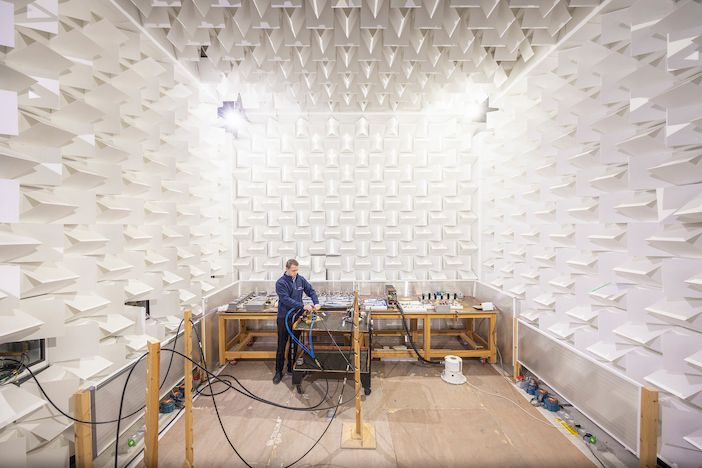
Ken Morley, qualification group leader for the EMC laboratory says, “If your phone stops working because you’re walking next to a noisy piece of equipment it’s an inconvenience. If you’re flying at 30,000ft and the flight control computer stops working, it’s a little bit more than an inconvenience.”
Morley and his team tend to go above and beyond. For example, commercial standards for a BCI test rest at 300mA and the EMC laboratory can test up to 4A. The team has also integrated the latest Fast Fourier Transfer (FFT) receivers which take measurements across time domains and not frequency domains, shaving hours off testing times. “A typical conducted emissions sweep for a DO160 with a 20msec dwell would take us about 50 minutes. With an FFT receiver, it takes us about two,” says Morley.


